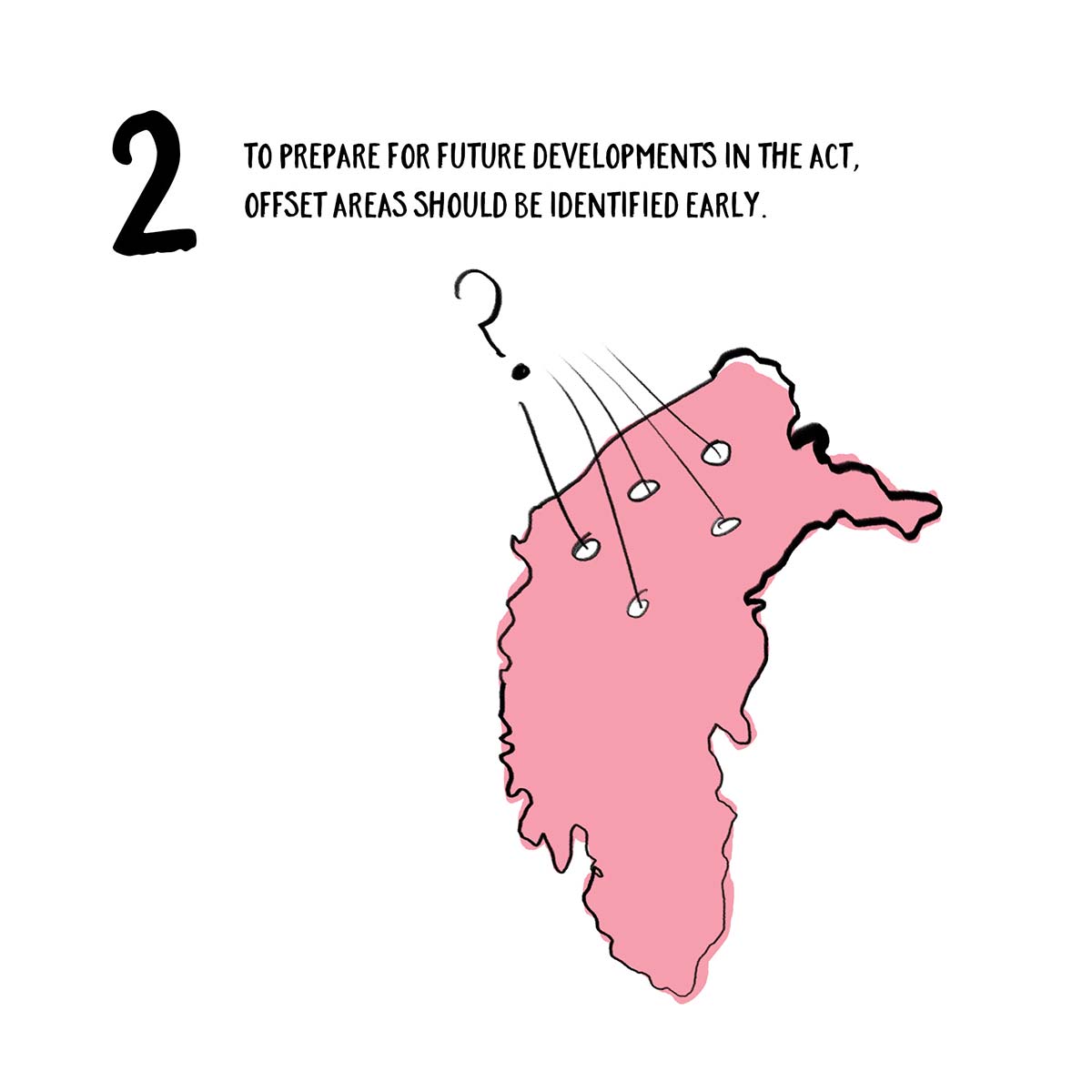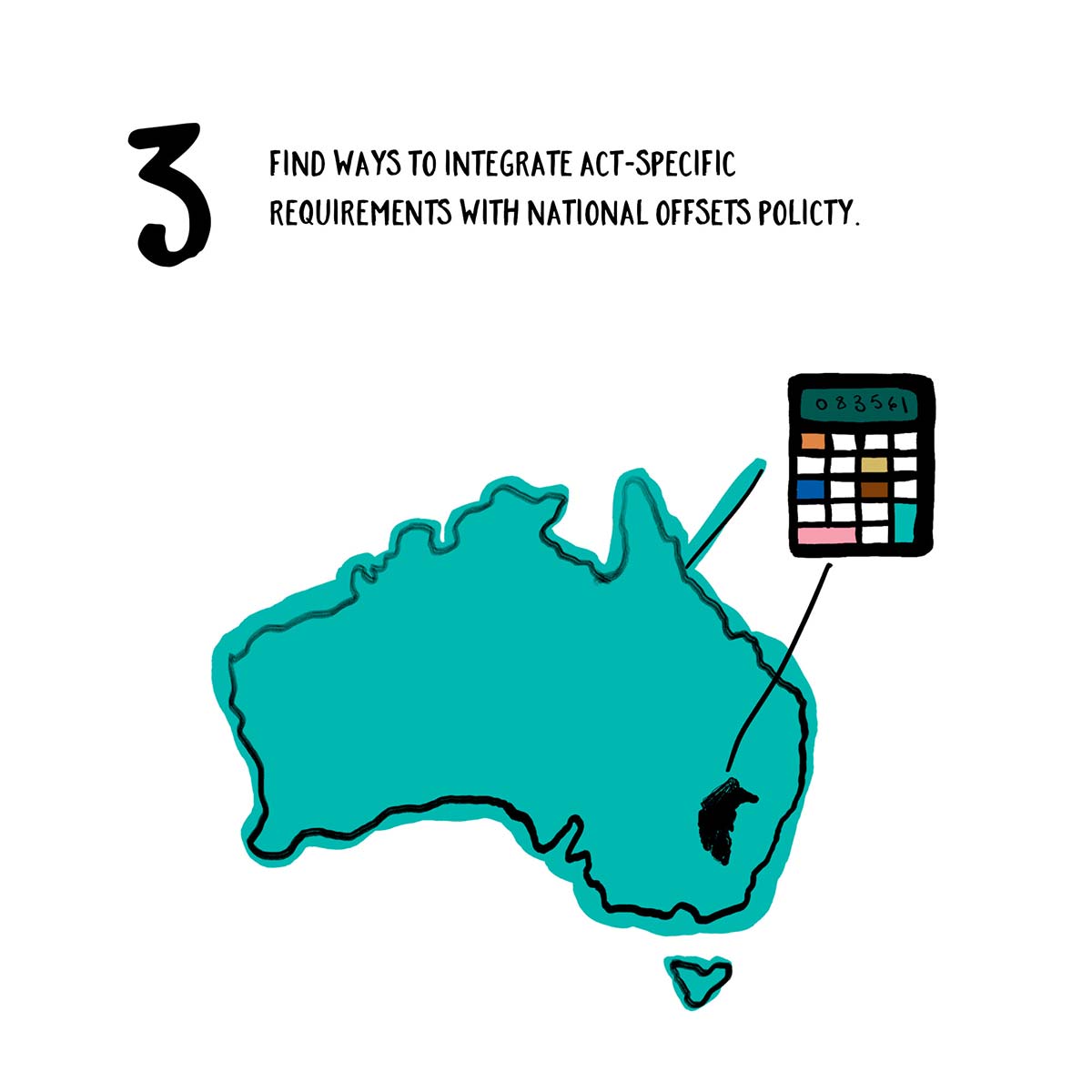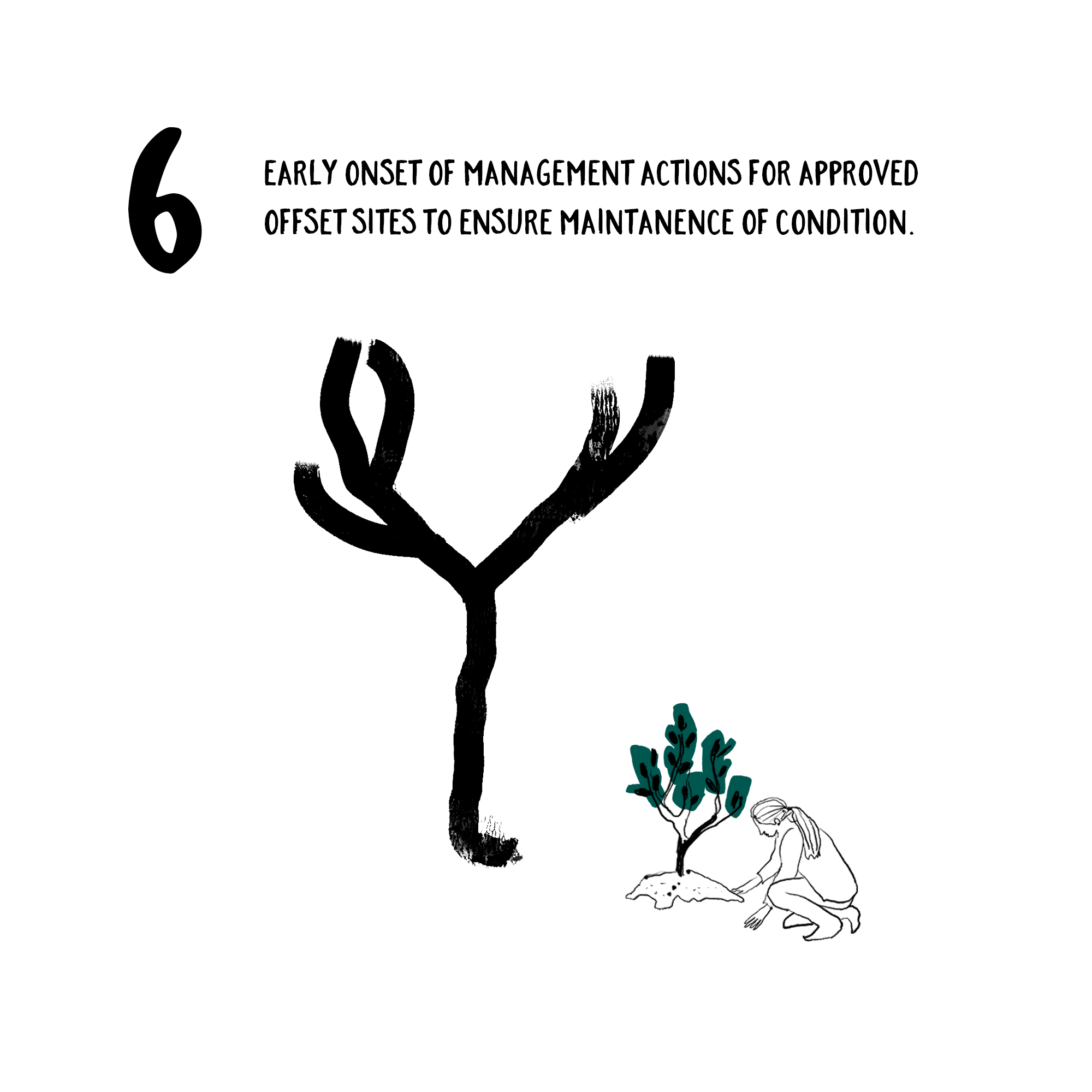
What are offsets?
Canberra’s population is rapidly increasing, putting pressure on our natural environment.
When building new suburbs for people to live, or utilities and agricultural areas to service the community, important ecosystems and biodiversity are impacted in the process.
In Australia, environmental offsets are required for any proposed impact on a Matter of National Environmental Significance under the Commonwealth Environment Protection and Biodiversity Conservation Act 1999.
Details of this are covered in the EPBC Act Environmental Offsets Policy.

In Australia, environmental offsets are required for any proposed impact on a Matter of National Environmental Significance under the Commonwealth Environment Protection and Biodiversity Conservation Act 1999.
Details of this are covered in the EPBC Act Environmental Offsets Policy.

The ACT Environmental Offsets Policy is currently implemented in line with the national policy, with added specifications relevant to the ACT context such as locally threatened species.
Our office has completed two investigations relating to environmental offsets in the ACT:
The Independent Audit of the Gungahlin Strategic Assessment and The Independent Audit of the Molonglo Valley Strategic Assessment.
How offsets are protecting superb parrot habitat in the ACT
Superb parrots are a vulnerable species that migrate to Canberra in the warmer months to breed in Box-Gum Woodlands. They nest in tree hollows in old growth trees (a tree hollow can take up to 150 years to form) and are fussy about their homes, choosing the same tree every year to breed in. Currently, there are approximately 5000 breeding pairs remaining.

The clearing of woodlands and removal of old growth trees has caused their numbers to decline, so their future is dependent on protecting any remaining habitat.
There are several urban developments in Canberra that have overlapped with superb parrot habitat. An example is the new suburb of Throsby, that lies adjacent to Goorooyarroo Nature Reserve and Mulligans Flat Woodland Sanctuary.
During the planning stages of developing Gungahlin, significant superb parrot habitat was identified, and the best areas protected. However, when Throsby was built (approximately 2017), an area of breeding habitat was destroyed and the remaining habitat inevitably impacted as the urban environment encroached. To ‘offset’ this impact, Goorooyarroo was set up to be permanently protected as an extension of Mulligans Flat Woodland Sanctuary and managed as an ‘offset site’.

Some of the projects that offsets funding went into include:
- Research into the behaviour, population health and conservation of superb parrots.
- Building a predator-proof fence to protect native species from fox and cat predation.
- Planting new eucalypt species that would eventually provide homes for superb parrots.
- Community outreach and education.
As the effects of climate change increase, the ACT is becoming a stronghold for superb parrots.
We are seeing more and more birds shifting away from other existing habitats, and moving to the ACT. This does not mean that their overall population is increasing, but instead indicates a change in where the birds are choosing to live.
In this way, superb parrots also illustrate the challenges of protecting species across multiple states.

As the effects of climate change increase, the ACT is becoming a stronghold for superb parrots.
We are seeing more and more birds shifting away from other existing habitats, and moving to the ACT. This does not mean that their overall population is increasing, but instead indicates a change in where the birds are choosing to live.
In this way, superb parrots also illustrate the challenges of protecting species across multiple states.

Since 2009, the total offset area in the ACT has increased 100 fold.
Current offset areas managed by the ACT Government can be found at https://www.environment.act.gov.au/parks-conservation/environmental-offsets and the Environmental Offsets Register lists all approved offsets sites within the ACT and outlines detail on each area.
Our office has identified opportunities to improve environmental offsets in the ACT










